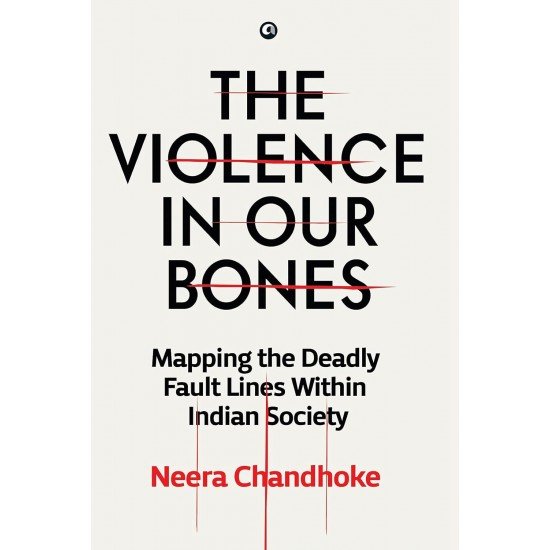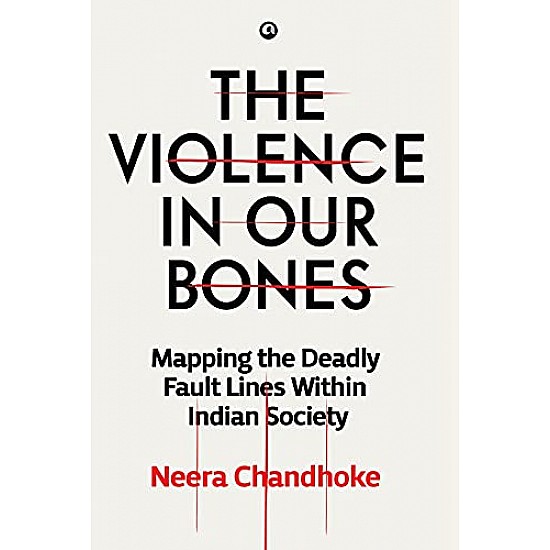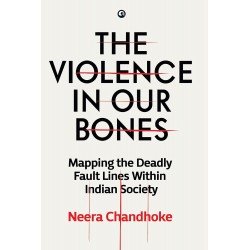THE VIOLENCE IN OUR BONES: MAPPING THE DEADLY FAULT LINES WITHIN INDIAN SOCIETY




- Stock: In Stock
- Brand: generic
- Model: 9789390652426
- Weight: 0.50kg
- Dimensions: 12.00cm x 15.00cm x 5.00cm
- SKU: BHVMLZ362Q
Exclusive Offers
-
Get 10% Discount: Use coupon code
VLE10for an instant 10% off on every product, up to ₹250. - Save Up to 28%: Get a GST invoice and save up to 28% on your purchase. Update your GST number here.
- Always Lowest Price: We guarantee the lowest prices on all products.
- Brand Warranty: All products come with an official brand warranty for your peace of mind.
- Want to Buy in Bulk? Get the best prices from our team. Click here to contact us.
Description
The Violence in Our Bones: Mapping the Deadly Fault Lines Within Indian Society
Welcome to our ecommerce site where we explore the complex and often hidden layers of violence that run through Indian society. In this deep dive into the social fabric of India, we uncover the fault lines that have led to countless deaths and atrocities. Through a combination of data, analysis, and personal narratives, we aim to shine a light on the stark realities of violence in our country.
Introduction
The violence in India is not just physical but runs deep within our society, embedded in the very bones of our collective existence. From caste-based discrimination to religious conflicts, gender-based violence to political unrest, the roots of violence are intertwined with the history and culture of India. These fault lines have led to countless deaths and injustices, leaving scars that continue to shape our present and future.
Mapping the Fault Lines
One of the key aspects of understanding violence in India is mapping the fault lines that run through our society. These fault lines are often invisible to the naked eye, hidden beneath the surface of everyday life. Through data analysis and research, we aim to uncover these fault lines and bring them to the forefront of national discourse.
Caste-Based Violence
Caste-based violence is one of the oldest and most pervasive forms of violence in India. The hierarchical caste system has divided society into rigid categories, with Dalits and other marginalized communities bearing the brunt of discrimination and violence. From atrocities like the Una lynching to the recent Hathras rape case, caste-based violence continues to plague Indian society.
Religious Conflicts
Religious conflicts have been a recurring theme in Indian history, leading to communal riots and bloodshed. The fault lines between different religious communities often erupt into violence, fueled by political and social factors. The 2002 Gujarat riots and the recent Delhi riots are stark reminders of the deep-seated religious tensions that exist in India.
Gender-Based Violence
Gender-based violence is another major fault line within Indian society, with women and marginalized genders facing systemic and individual forms of violence. From domestic abuse to sexual assault, gender-based violence is a daily reality for millions of Indian women. The #MeToo movement and the Nirbhaya case have brought widespread attention to this issue, but much more needs to be done to address the root causes of gender-based violence.
Political Unrest
Political unrest and violence are also significant fault lines within Indian society, with conflicts between different political factions leading to riots, assassinations, and other forms of political violence. The rise of extremist groups and the polarization of political discourse have further exacerbated these fault lines, threatening the stability of the country.
Bringing Awareness and Change
While the violence in our bones runs deep, there is hope for change through awareness and action. By shining a light on these fault lines and engaging in conversations about violence, we can begin to dismantle the structures that perpetuate injustice and discrimination. Through advocacy, education, and policy changes, we can work towards a more just and peaceful society for all.
The violence in our bones is a stark reminder of the deep-rooted issues that plague Indian society. By mapping these fault lines and exploring the complex dynamics of violence in India, we can take steps towards a more inclusive and equitable future. Through dialogue, empathy, and action, we can work together to transform our society and build a more peaceful world for future generations.
Specifications
| Additional features | |
| Generic Name | Books |
| Publisher | Generic |
| General | |
| Condition | new |


